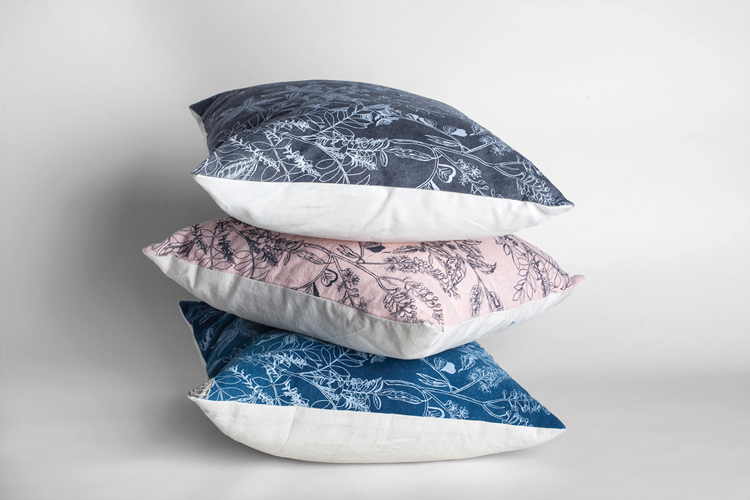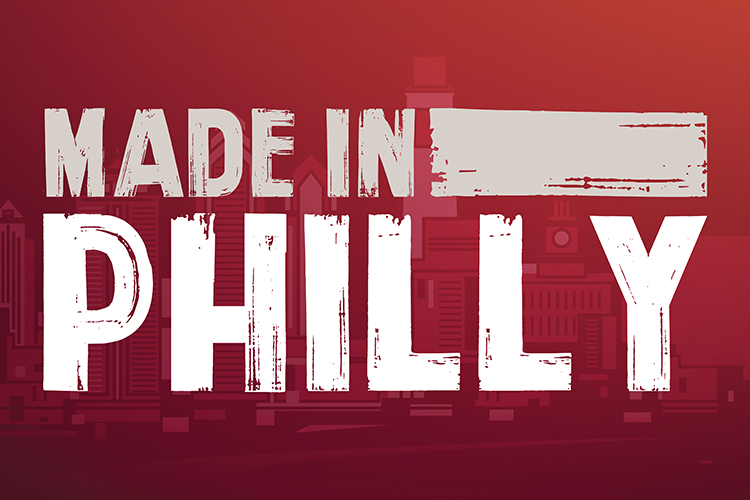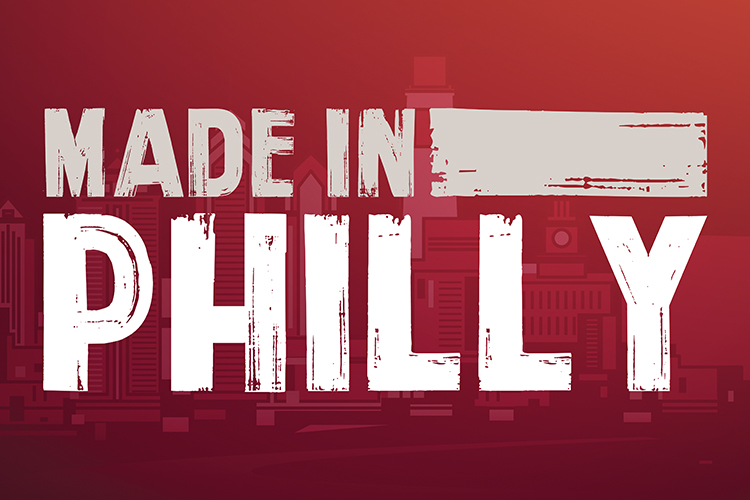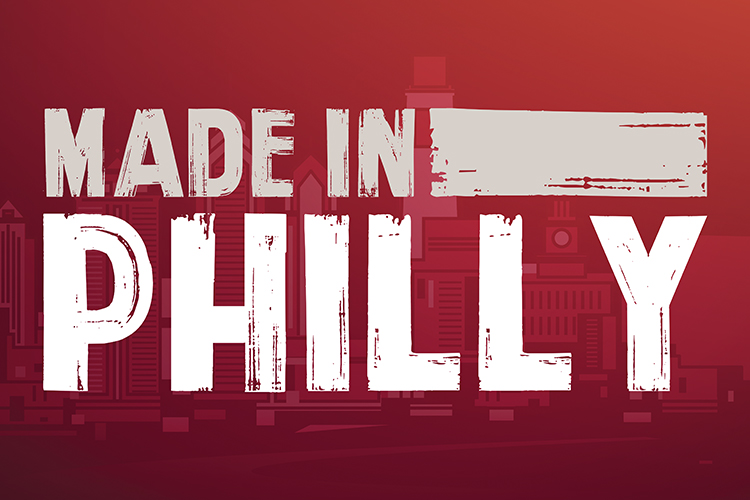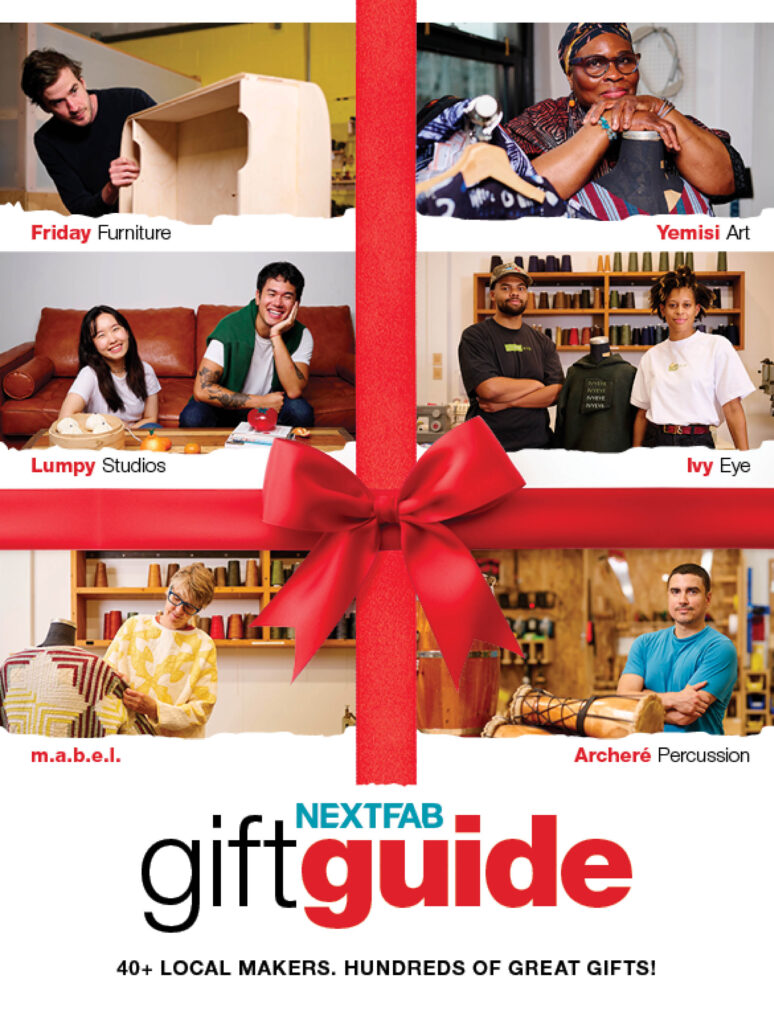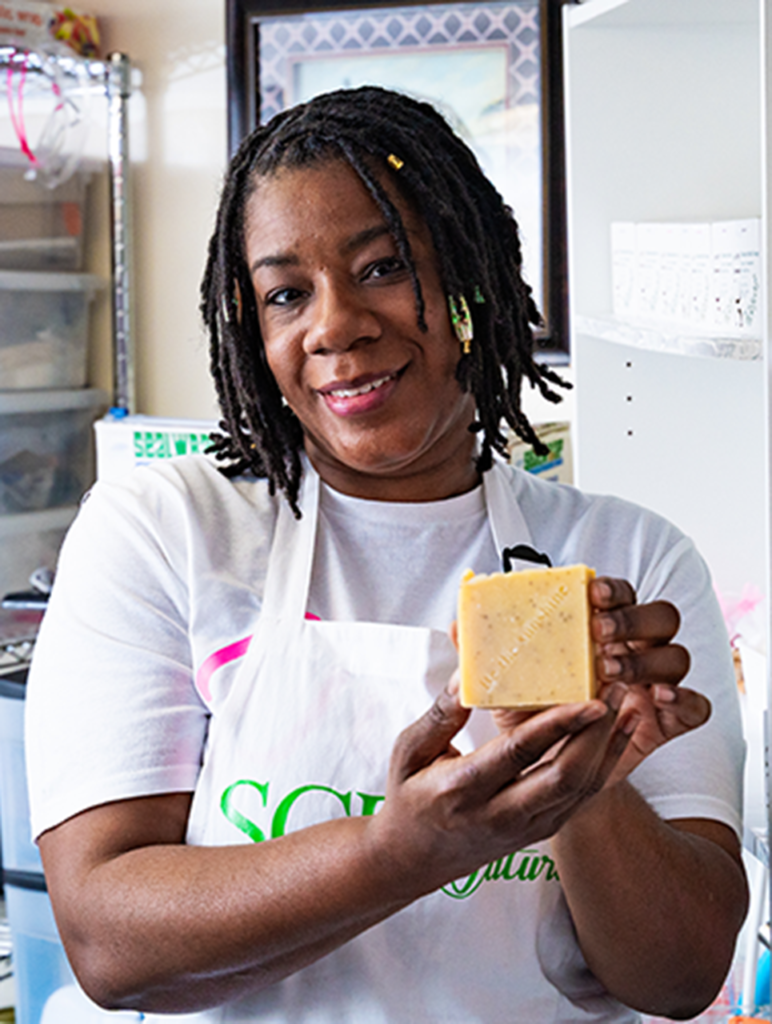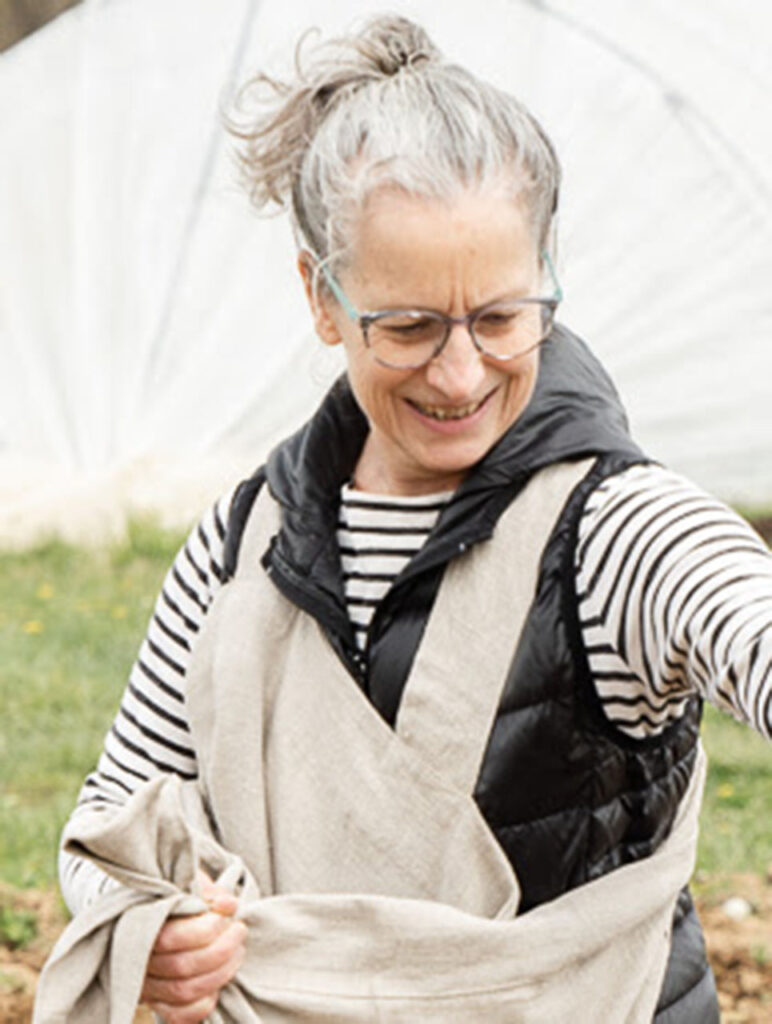Photo by Erick Sternberg
Mood Indigo
by Emily Teel
Elizabeth McTear of Honest Alchemy spends her days dipping into pools of color: salmon red from madder root, mustard yellow from fustic wood, and rich cranberry from brazilwood.
The deep blue from indigo—and a desire to get away from commercial toxic dyes—was what started her down the garden path of making a line of natural, hand-dyed clothing, accessories and housewares in her Germantown studio.
She first learned her techniques while studying textile design at Moore College of Art & Design, but in the classroom she only learned how to work with synthetically produced dyes.
These dyes, like oil paints, are high in heavy metals, and McTear couldn’t reconcile her lifelong environmentalism with pouring a spent vat of commercial dye down the drain.
“I needed to find a way to continue,” she said, “but not necessarily participate in the toxic side of it.”
That’s when McTear started experimenting with indigo, that color in the rainbow between blue and violet. It comes from a leafy plant that naturally yields that deep blue color when processed for dye-making.
“Where the fun comes in,” she says, “is that indigo on wool, cotton, [or] silk… it’s all from the same vat, but the resulting colors are completely different based on the fiber itself. On silk, I get Aegean blues; on wool, I get deep, inky blues… the range of colors is so wide, and that’s just one color!”
Come spring, she’s planning her very own backyard dye garden with flowers like goldenrod, coreopsis and marigold.
“The more I learn,” she says, “the more I realize the color that could come from flowers that you or I can get at the farmers market.”
Local makers supply Honest Alchemy with the scarves, pillowcases, sweaters, tote bags and bandanas that McTear dips into her dye vats. The earthy and richly hued results take their texture from the wool, silk and cotton of the original items, and have helped McTear build a loyal following on Etsy and through national retailers such as Anthropologie.
In her work, McTear employs the ancient Japanese fabric dyeing practice called shibori, a method of pleating fabric and securing it with string or wooden blocks. Just as with tie-dye, whatever space is bound remains the original color of the fabric and whatever is exposed picks up the color of the dye it’s submerged in.
In addition to dyeing, McTear is exploring eco-printing, a process whereby she lays natural materials like leaves onto treated fabric, which she then steams. The plant materials leach their natural hues directly into the fabric, and the resulting silhouettes of leaves appear as though they were woven into the fabric itself.
While she finds her methods and materials less toxic, it’s challenging.
“It’s completely different,” McTear says, laughing. She explains that using natural dyes is “a lot more fickle and in some ways difficult, [but] it’s also really satisfying.”
Honest Alchemy products can be found online at etsy.com and at Philadelphia retail locations such as Moon + Arrow.



